If you’re in the market for a tree or shrub, consider California natives — for a number of reasons.
While we’ve received nearly two inches of rain this fall, Southern California is still in an extreme drought. California native trees are drought tolerant and have the best chance of success once they get established. They attract native beneficial insects and birds. Plus, there’s a surprising variety to choose from.
I contacted local experts from the California Native Plant Society for their favorites. I also tapped Abby and Jason Harned, who have established a thriving landscape that includes native tees for their organic farm, Three Sisters Farm. Abby also heads up the planting of natives in Redlands’ Caroline Park.
Now is also the ideal time to plant all native plants. Click here for planting and watering guidelines
California Bay and Walnut among Favorites
Nancy Rutherford, a long-time California Native Plant Society member and an urban native plant gardener, advises that tall is not always better. “That is for eastern trees. In California where breezes blow up to and above 100 mph, and not just in gusts, you want a tree that doesn’t get taller than a one-story house, but has a canopy that is wide and shade-providing. You also want trees that won’t block your solar panels, and cost a lot for removal and repair,” she says.
One of her favorites is the California bay tree (Umbellularia californica), which does well on little to no irrigation once established. “Put it in the right spot, with non-amended soil, and it will bless you far more than the much more touted European laurel, and give better flavor when the leaves grace your stews. It needs pruning to attain tree status, but left alone will become a scented sanctuary for all kinds of wild entities,” says Rutherford.
“When large, its bayleaf scent provides a bug-free room under the canopy. No kidding,” says Rutherford. It’s an evergreen so there’s constant leaf litter, but the fallen leaves form a bright golden-yellow, nicely scented carpet.
California walnut (Juglans californica) “is a deciduous tree that’s not too tall but provides great shade. It also provides a lovely lacy fall color and texture,” says Rutherford. “Keep it trimmed to remind it that it is a tree, but otherwise it thrives on neglect.” Also, its large nuts are tasty and the black color can be used as a dye.
The Mexican blue fan palm (Brahea armata) features pale silvery blue fan fronds that provide texture and structure as well as color. It’s extremely slow growing, but Rutherford says this palm is as beautiful small as when it’s mature.
More to follow, but here are some photos of trees mentioned in this article
Tree Mallow and Hollyleaf Cherry for Shrubs
Two shrub-like favorites of Rutherford’s are island tree mallow (Lavatera assurgentifolia) and hollyleaf cherry (Prunus ilicifolia)
Related to hollyhocks and cheeseweed, the tree mallow is an easy, fast grower that features beautiful maroon-pink cream flowers and hollyhock-like seed pods. It’s drought deciduous, with a creamy white trunk. Rutherford warns that billions of adorable heart-shaped seedlings appear after the first rains. Being of similar colors, she likes to plant the mallow next to the blue fan palm. The island tree mallow typically grows to 10’ by 10’, although we have an ancient one that is 15 feet wide.
Rutherford recommends hollyleaf cherry (Prunus ilicifolia) as a very tall hardy shrub that features creamy white flowers that turn into curtains of deep red cherries. It offers a deep intense green wall of wildlife-friendly curly foliage in winter, spring, summer, fall – and even during drought, according to Rutherford. “Hollyleaf cherries are much favored by bushtits, the ones with the hanging sock nests, and hummingbirds, the ones with attitude,” says Rutherford. They can be pruned heavily if you don’t want a forest of them.
Arlee Montalvo, a CNPS member and also a plant ecologist and long-time grower of native plants at her home, said the hollyleaf cherry does not get as tall or treelike as the one from the Channel Islands, P. ilicifolia subsp. lyonii, often known as Catalina cherry. The two do hybridize and both have been in the nursery trade since at least the early 1900’s. Hybrids are often sold but not marked as such. So to get a hollyleaf cherry, go to a nursery like Rancho Santa Ana Botanic Garden, Mockingbird Nursery or Tree of Life Nursery.
She also loves the toyon (Heteromeles arbutifolia), another tall shrub that can be grown as a small tree. “It is loaded with its small red fruits right now that the birds love, and is a great one for the holiday season. It is also easy to grow and very tough,” Montalvo says.
The rare Englemann oak (Quercus engelmanii) is another favorite. It is not usually as large as coast live oak (Q. agrifolia. It also appears less sensitive to some of the emerging diseases that are affecting native oaks. You can see healthy specimens in Redlands’ Caroline Park.
Other Favorites from Three Sister Farms
To create biodiversity, Abby and Jason Harned have focused on restoring native plants and trees on their organic Three Sisters Farm, now in it’s ninth year of production. Native plants and trees create a balance of predators and prey, necessary in organic farming.
“We like Coast Live Oak (Quercus agrifolia) for habitat value and form as well as Canyon Live Oak (Q. chrysolepis), and Scrub Oak (Q. berberidifolia). Also, Western sycamore (Platanus racemosa) for fall color and colorful bark (click here for more on the Western sycamore), Western Redbud (Cercis occidentalis) for striking magenta flowers on bare stems, and Fremont Cottonwood (Populus fremontii) for fast growth,” says Abby Harned.
Other favorites of the Harneds include California Fan Palm (Washingtonia filifera) for its historic and cultural value, and being the only palm native to California, the thornless hybrid palo verde called ‘Desert Museum’ Palo Verde for its green bark and yellow flowers, Desert Willow (Chilopsis linearis) for its drought tolerance and delicate pink flowers, and Tecate Cypress (Hesperocyparis forbesii) for its evergreen foliage and rarity.
Do consider these – and plant now so they can get their deep roots established before the heat arrives once again.
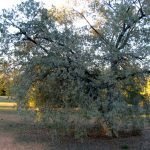
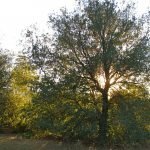

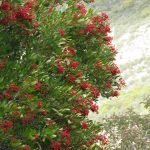
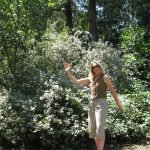
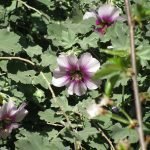
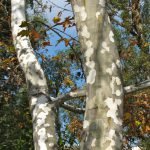

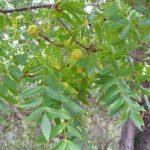
Leave a Reply